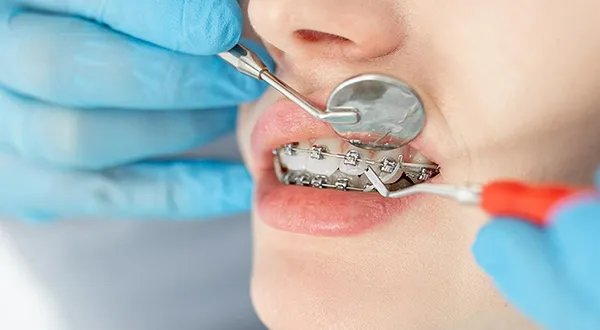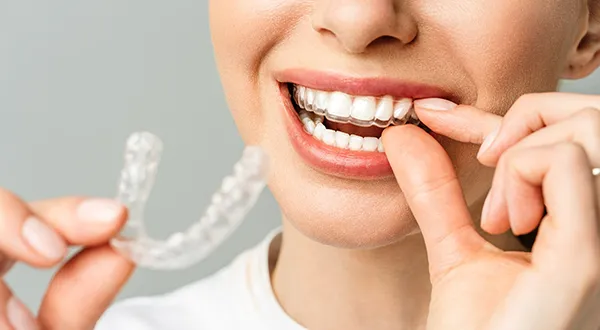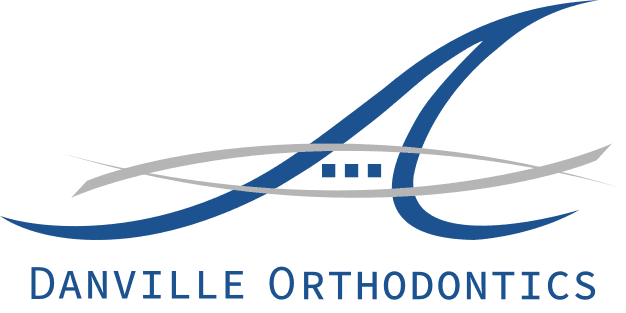Types of Orthodontic Treatments for Adults
Recently, more adults have opted for orthodontic treatment to improve their dental health and enhance their smiles, shifting away from the traditional idea that braces are only for children and teenagers. Thankfully, various orthodontic treatments are tailored for adults, each with advantages and disadvantages. This guide aims to delve into some prevalent orthodontic treatments for adults, providing insights to help you decide on the most suitable option for your needs.
Common Orthodontic Issues in Adults
- Misaligned Teeth:
Misaligned teeth, also known as malocclusion, can also affect adults. This condition may result from genetics, early loss of baby teeth, or improper dental habits. Misalignment impacts the smile's appearance and can lead to difficulty chewing and cleaning teeth properly.
- Overbite and Underbite:
Overbite and underbite occur when the upper or lower jaw is misaligned. These conditions can cause uneven wear on teeth, jaw pain, and difficulty in speech. Adult Orthodontic treatments, such as braces or clear aligners, can help correct these bite issues.
- Crowded Teeth:
Crowded teeth happen when there isn't much space in the jaw for all the teeth to align correctly. This can result in overlapping teeth, making it challenging to maintain good dental hygiene and increasing the risk of tooth decay and gum disease.
- Gaps Between Teeth:
Gaps, or diastema, can concern adults. While some people embrace the gaps as part of their unique smile, others may seek orthodontic treatment to close these spaces, which various factors, including genetics or the size of the jaw, can cause.
- Protruding Teeth:
Protruding teeth, where the upper front teeth extend too far forward, affect the smile's aesthetics and can also increase the risk of injury to these teeth. Orthodontic solutions can help bring protruding teeth into proper alignment.
- Crossbite:
Crossbite occurs when upper and lower teeth do not meet adequately, leading to bite misalignment. This condition can cause uneven wear on teeth and jaw discomfort. Orthodontic interventions can correct crossbites, improving both function and appearance.
- Open Bite:
An open bite occurs when some teeth don't contact opposing teeth, creating a gap. This condition can affect speech and lead to difficulties in biting and chewing. Orthodontic treatments for adults can address open bites, improving oral function and aesthetics.
- Midline Misalignment:
Midline misalignment refers to the improper alignment of the center of the upper and lower teeth. This can affect the overall symmetry of the smile. Orthodontic procedures can help correct midline issues, enhancing facial harmony.
- Temporomandibular Joint (TMJ) Issues:
Orthodontic problems can sometimes contribute to TMJ issues, leading to pain, clicking, or stiffness in the jaw joint. Collaborative treatments involving orthodontics and TMJ care may be necessary for comprehensive management.
Orthodontic Treatments for Adults
Traditional Braces: A Time-Tested Solution for Orthodontic Correction
Metal braces typically include brackets, wires, and bands. Each tooth is affixed with brackets, and an archwire is threaded through them to facilitate the orthodontic treatment. Elastic bands, known as ligatures, secure the wire to the brackets. This system works together to move the teeth into their desired positions gradually.

Materials Used:
The brackets in traditional braces are usually made of high-quality stainless steel, which provides strength and durability. Modern advancements have also introduced smaller, less conspicuous brackets, reducing the overall visibility of the braces.
Duration of Treatment:
Treatment duration for traditional braces varies based on dental complexity, lasting 18 months to three years on average. Regular adjustments are necessary to ensure steady progress and optimal results.
Maintenance and Care:
Oral hygiene is crucial when undergoing adult orthodontic treatment with traditional braces. Patients should steer clear of specific foods that may pose a risk to the braces and stick to the care and maintenance guidelines provided by the orthodontist.
Affordability and Insurance:
Traditional braces are often covered by dental insurance plans, making them a financially accessible option for many individuals. Orthodontic consultations can help determine insurance coverage and payment plans.
Clear Aligners: Invisible Solutions for Orthodontic Transformation
Using transparent, custom-designed trays, clear aligners represent a contemporary orthodontic approach to gently moving teeth into their desired positions over time. They are virtually invisible, making them a popular choice for those who want a more discreet method of orthodontic correction.
How Clear Aligners Work
- Customization: The orthodontist creates a 3D digital model of the patient's teeth, which is the basis for designing a series of aligners.
- Progressive Treatment: Patients must wear each set of aligners for about two weeks before advancing to the next set. Each new set applies slight adjustments, gradually moving the teeth into the desired alignment.
- Removability: One of the key advantages is that clear aligners are removable, allowing individuals to eat, brush, and floss without the constraints associated with traditional braces.
Materials Used
Clear aligners are typically made from durable, transparent plastic materials like polyurethane resin. This material is both comfortable and virtually invisible when worn.
Duration of Treatment
The duration of precise aligner treatment varies based on individual needs and the complexity of the orthodontic issues. On average, treatment can take several months to a couple of years.
Maintenance and Care
Maintaining good oral hygiene is essential during clear aligner treatment. Aligners should be removed before eating, and proper cleaning routines should be followed to prevent plaque buildup.
Affordability and Insurance
While clear aligners cost more than traditional braces, many dental insurance plans offer coverage. Consultation with an experienced orthodontic professional can help determine insurance benefits and payment options.

Ceramic Braces: A Subtle Approach to Orthodontic Alignment
Ceramic braces have the same fundamental structure as traditional braces but have a cosmetic twist. The brackets are made from a translucent or tooth-colored ceramic material, blending with the natural color of the teeth. This makes them less noticeable than their metal counterparts.
Similar to metal braces, ceramic braces use a bracket and wire system. The brackets are affixed to each tooth, and an archwire connects them. Elastic bands, or ligatures, secure the wire to the brackets. The archwire exerts gentle pressure on the teeth, guiding them into the desired alignment over time. Regular adjustments by the orthodontist are essential for optimal progress.
Duration of Treatment:
The treatment period with ceramic braces is similar to that of traditional braces, typically ranging from 18 months to three years. Regular orthodontic visits for adjustments are crucial for achieving the desired results.
Maintenance and Care:
Good oral hygiene is essential during the treatment of ceramic braces. Proper brushing, flossing, and regular orthodontic check-ups help prevent staining or decay.
Affordability and Insurance:
Ceramic braces may be more expensive than traditional braces, and insurance coverage can vary. Consulting with an orthodontic specialist can clarify the costs and available payment options.
Lingual Braces: Invisible Orthodontics for Subtle Teeth Alignment
Lingual braces are unique in that they are attached to the teeth back (lingual side), making them virtually invisible when viewed from the front. Customized to fit the individual's dental anatomy, lingual braces provide a discreet way to address various orthodontic concerns.
How Lingual Braces Work
- Customization: Lingual braces are custom-made for each patient, ensuring a perfect fit and optimal comfort.
- Bracket and Wire System: Similar to traditional braces, lingual braces use brackets and wires to move the teeth into the desired positions gradually.
- Invisible Correction: Since lingual braces are hidden from view, they offer a more aesthetically pleasing alternative to traditional braces.
Duration of Treatment
The duration of lingual brace treatment is comparable to traditional brace treatment, ranging from 18 months to three years. Regular orthodontic check-ups are necessary for adjustments and monitoring progress.
Maintenance and Care
Maintaining good oral hygiene is crucial during lingual braces treatment. Specialized dental care tools may be recommended to ensure effective cleaning around the hidden brackets and wires.
Affordability and Insurance
Lingual braces are generally more costly than traditional braces, and insurance coverage may vary. Individuals considering lingual braces should consult their orthodontic specialist to discuss costs and potential payment plans.
Accelerated Orthodontics: Streamlining the Journey to a Confident Smile
Accelerated orthodontics is a specialized field that utilizes various techniques to accelerate the movement of teeth during orthodontic treatment. This approach aims to reduce the overall treatment time while maintaining the effectiveness and precision of traditional orthodontic methods.
Techniques Used in Accelerated Orthodontics
- High-Frequency Vibration Devices: These devices deliver gentle vibrations to the teeth, stimulating bone remodeling and facilitating faster tooth movement.
- Micro-osteoperforations (MOPs): Small perforations in the bone around the teeth create localized trauma, prompting an accelerated healing response and faster tooth movement.
- Topical or Systemic Accelerants: Some orthodontic treatments involve applying topical gels or systemic medications to enhance bone remodeling and accelerate tooth movement.
Duration of Treatment
The exact duration of accelerated orthodontic treatment varies based on the specific techniques employed and the individual patient's response. While it significantly reduces treatment time, the overall duration can vary depending on the case's complexity.
Maintenance and Care
Good oral hygiene is crucial during accelerated orthodontic treatment. Regular orthodontic check-ups are essential for adjustments and to monitor the progress of tooth movement.
Affordability and Insurance
Patients considering accelerated orthodontics should discuss the associated costs with their orthodontic specialist. Insurance coverage for accelerated techniques may vary, and it's essential to inquire about potential reimbursement or coverage.
Contact your Danville dentist, Dr. Hoss Abar, DDS, MSD, at Danville Orthodontics to learn more about different types of orthodontic treatments for adults.
Resource:
Introduction to Adult Orthodontics
*Neither this nor any other content in this media is meant to prescribe, recommend, or prevent any treatment or procedure. We highly recommend that you get the advice of a qualified dentist or other medical practitioners regarding your specific dental condition.
